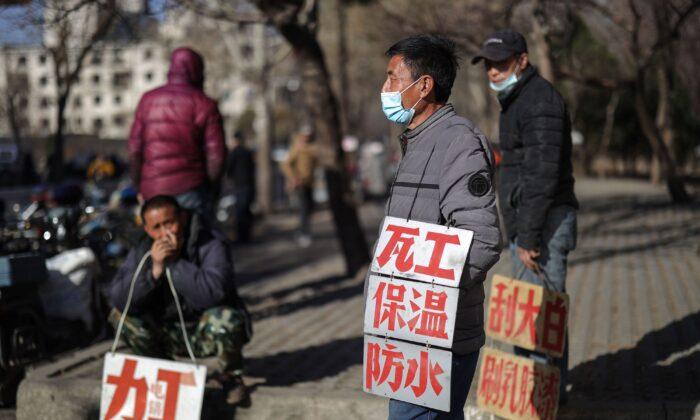Recently, authorities and experts in China have acknowledged that income inequality between urban and rural areas is increasing and that it presents a tremendous challenge for achieving “common prosperity.”
“Common Prosperity” is a propaganda slogan coined by Communist Party leader Xi Jinping. It promises economic stability to all Chinese citizens and is at the same time a vital prerequisite for cementing Xi’s continued leadership during the coming years.
At the 2022 Tsinghua Forum on the Three Rural Issues held earlier this month, Wei Houkai, director of the Rural Development Institute of the Chinese Academy of Social Sciences, stated that the income inequality between urban and rural residents continues to rise.
According to Wei, the rural per capita disposable income in 2020 was about 17,000 yuan ($2,703), and is behind that of urban households by 11 to 12 years.
His conclusion was similar to the data published by the National Bureau of Statistics, which listed the 2020 annual per capita disposable income of rural households as being 17,131 yuan ($2,703), and the absolute difference between urban and rural households was about 27,000 yuan ($4,259). Notably, in 2010, this absolute income difference was only about 10,000 yuan ($1,578).
‘Common Prosperity’
According to a recent report, “Common Prosperity (IV): Urban-Rural Differences,” published by the investment firm Ping An Securities on Sina Financial, the urban-rural income ratio in China was 2.6:1 for the year 2020.“In comparison, developed countries like the United Kingdom and Canada have a ratio of about 1:1, while some low-income countries, such as Uganda, have a ratio of about 2.3:1,” the report said.
The report also emphasized that a multitude of differences exist between rural and urban areas, ranging from production and transportation to public services, such as education, social security, and health care.
Disparity Hard to Improve
In the book, “The Myth of Chinese Capitalism: The Worker, the Factory, and the Future of the World,” award-winning journalist Dexter Roberts stated that China had about 285.6 million rural laborers in urban areas by the end of 2020. However, these migrant workers were treated as “outsiders” and “second-class citizens” and received no social benefits from local governments.Zhang Sutian, a Chinese political commentator, believes that the increasing income inequality between urban and rural areas is the result of the Chinese Communist Party’s policies over several decades.
“From the ‘People’s Commune’ between the 1950s and 1960s that deprived farmers of their land, to the various restrictions imposed in the 1980s to control food prices, to the forced migrations due to urbanization in the post-2000s, farmers were always sacrificed,” Zhang told the Chinese edition of The Epoch Times.
Those rural Chinese farmers who don’t own the land have no way to compete with the opportunities available to urban dwellers; it’s hard for them to increase their income and raise their social status, Zhang said.
Zhang added that it’s unlikely there will be any improvements made in the foreseeable future to change the discrepancy in China between urban and rural prosperity.






